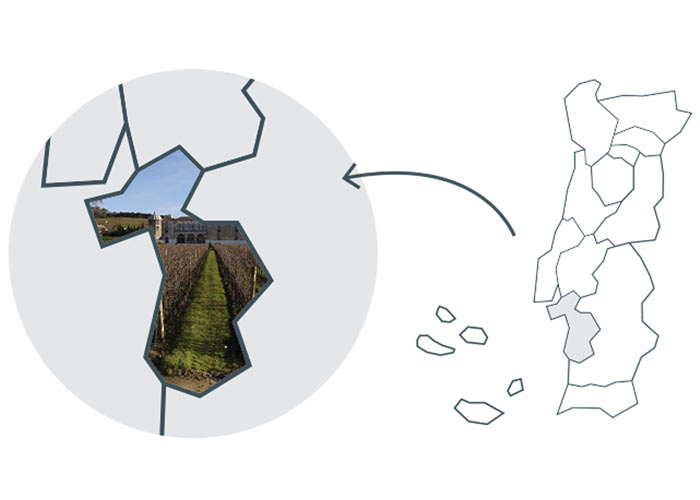Wine regions
Portuguese wine regions
Península de Setúbal
A bit of history
In the 19th Century, the biggest continuous vine in the world was located in the Península de Setúbal: about 4000 hectares of vine that belonged to a single producer. Currently, the area occupied by the vine is of about 10000 hectares.
The region’s most infamous wine, Moscatel, was much exported to Brazil. When the wine was not sold, it would return to Portugal. Transportation was done in ships that crossed the Atlantic. Therefore, the wines were subject to high temperatures throughout the journey. Once arrived at the port, one would notice that the wine in the barrels was more concentrated and softer. These wines became known as torna-viagem (free translation: return trip).
What to expect?
The Setúbal Peninsula lies across the estuary of the River Tagus directly south of Lisbon, and linked to Lisbon by two bridges.
The wine region Península de Setúbal also includes a large coastal chunk of the administrative region (as opposed to the wine region) of Alentejo.
Much of the area is flat and sandy, with the exception of the Serra da Arrábida, a short chain of mountains running along the south coast of the peninsula, where the soils are limestone or clay-limestone. It is on these Serra da Arrábida slopes that the grapes are grown for the famous sweet Moscatel de Setúbal wines.
The climate is Mediterranean, with hot, dry summers and mild but rainy winters. Vineyards in the Serra da Arrábida are cooler, owing to the higher altitude and the proximity of the sea.
The Vinho Regional was recently renamed Península de Setúbal. (it was formerly called ‘Terras do Sado’ after the River Sado that flows through the southern part of the region). There are two DOCs, Setúbal and Palmela. Setúbal is sweet and fortified, made primarily from the Muscat of Alexandria grape. It can be labelled Moscatel de Setúbal when Muscat makes up more than 85 per cent of the blend.
It’s a very sweet, fragrant wine, with candied orange flavours, floral and raisiny when young, developing nutty, toffeed aromas with maturity. Moscatel Roxo (a pink grape) makes wines that are even more scented. DOC Palmela is mainly red, and based on the late-ripening Castelão grape, which is more at home in the hot, sandy soils of Palmela than anywhere else in Portugal, ripening well to make wines of complexity and depth, elegance an balance, with good cherry fruit.
Reds
Common varieties: Alfrocheiro e Trincadeira
Whites
Common varieties: Arinto, Fernão Pires e Moscatel de Alexandria
Adapted from: CVR Península de Setúbal, Wines of Portugal, Instituto do Vinho e da Vinha.


